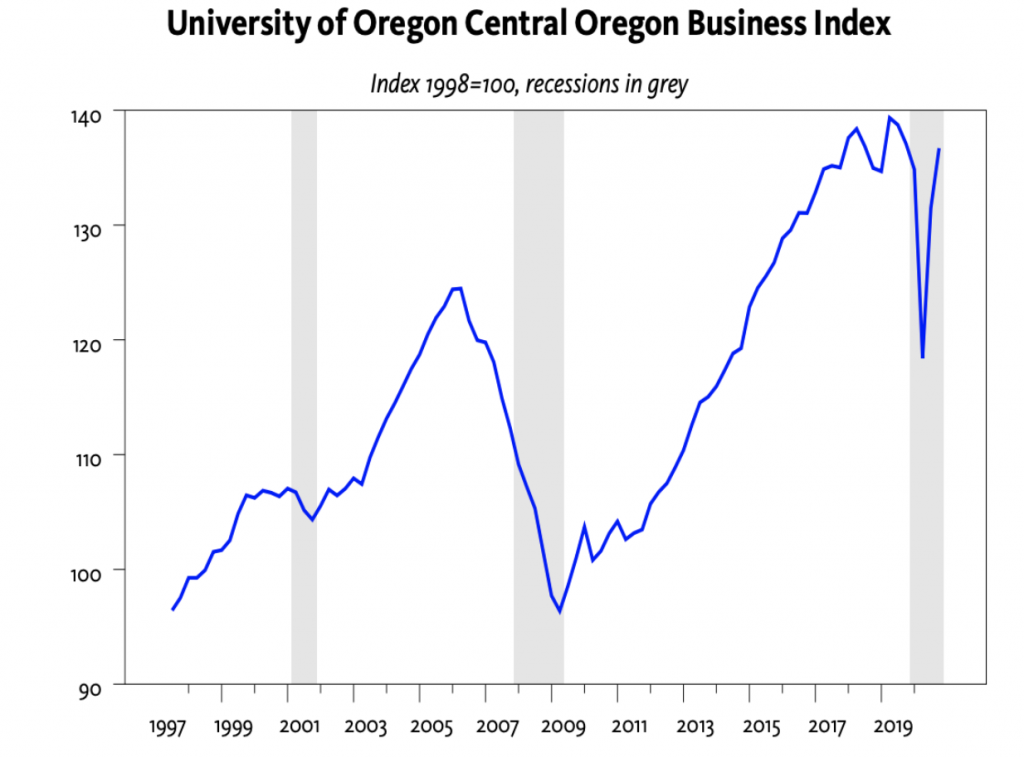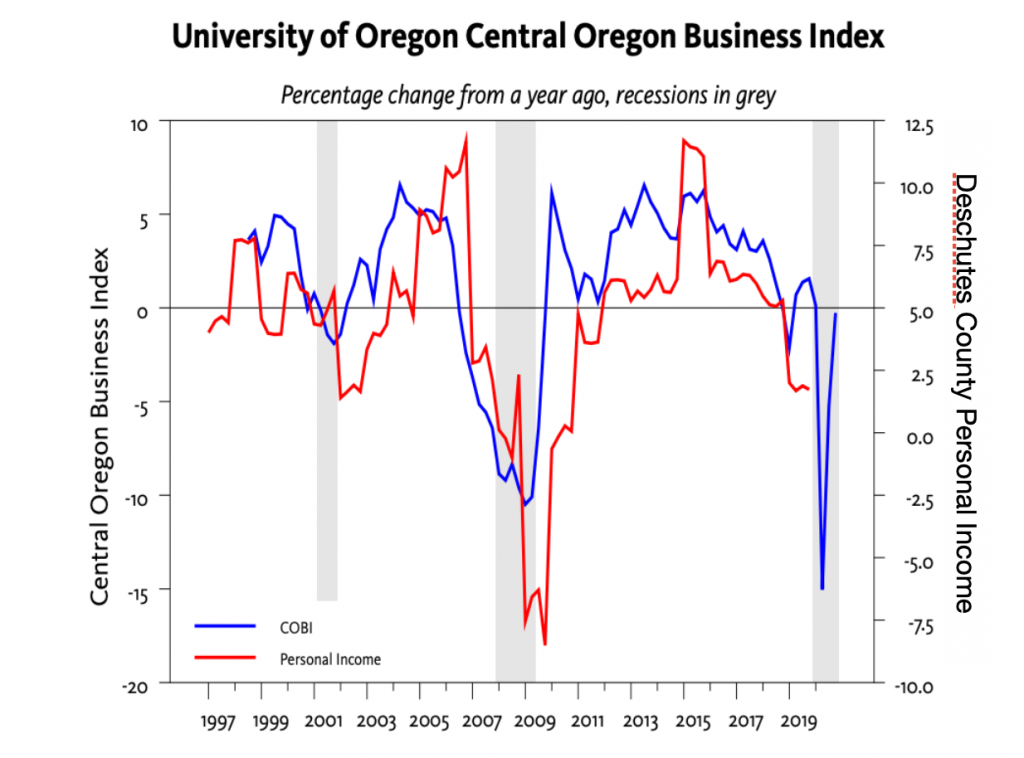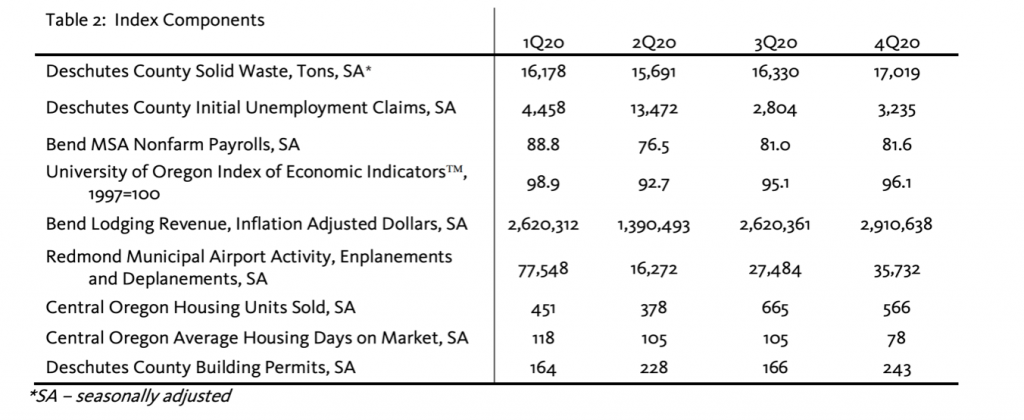University of Oregon Central Oregon Business Index®
By Timothy A. Duy
Director, Oregon Economic Forum Department of Economics, University of Oregon
541-346-4660 · duy@uoregon.edu
Fourth Quarter 2020

Analysis
The Central Oregon Business Index continued to rise in the fourth quarter despite the winter wave of the Covid-19 pandemic and the associated restrictions on business activities. While a broad array of indicators have improved, the labor market remains depressed. Assuming the pandemic ebbs as vaccines become more widely available, activity should accelerate in 2021. Labor market improvements stalled out in the fourth quarter as the pandemic forced new restrictions on business activity. Initial unemployment claims rose and employment rose only slightly; employment is roughly 7,000 jobs lower than prior to the pandemic. A full recovery in the labor market requires that the pandemic be brought under control such that sectors most impacted, such as leisure and hospitality, can rebound. Like much of the state and nation, housing is a bright spot in the economy. Although the number of sales slid from the breakneck pace of the third quarter, homes are selling more quickly as buyers leap at any inventory that becomes available. Construction activity accelerated to an average monthly pace of 243 units permitted compared to 166 the prior quarter. The persistent strong demand for housing should help keep upward pressure on home prices. Tourism and travel indicators are mixed. Air passenger traffic rose but remains well below pre-pandemic levels. Lodging revenues, in contrast, have staged a strong recovery. The availability of outdoor recreation options is likely attractive to travelers looking to escape the pandemic. Separately, waste flows continue to rise as they typically do during an expansion and are also driven by solid construction activity and a consumer shift from services to goods purchases. The relative resilience of the regional economy during the winter wave of the pandemic reveals underlying strength that will serve as a strong base for more complete recovery when the pandemic comes under better control. If vaccine distribution allows that to occur by the middle of the year, the economy could quickly normalize in the second half of 2021.

Methodology and Notes The methodology used to construct the Central Oregon Business Index is identical to that used by the University of Oregon Index of Economic Indicators. Both follow the approach developed by the Conference Board, an independent, not-for-profit research organization, to construct a U.S. Leading Index. Individual components are transformed into symmetric percentage changes, and the resultant series are adjusted to equalize the volatility of the components. This process ensures that a change in a high volatility component is weighted equally to a change in a low volatility component. The adjusted series are summed to create the index, which is rebased to set 1998=100. Full details can be found at www.globalindicators.com. The Central Oregon Business Index (COBI) provides a snapshot of business activity by aggregating nine often contradictory economic statistics into a single variable. The variables are chosen on the basis of economic relevance, timely availability, and sufficiently long history. The selected variables, measures of the labor market, tourism, housing markets, waste generation and the state economy, cover a wide swath of local economic activity. The COBI as constructed mirrors other indicators of economic activity that are reported on a less timely basis. For instance, on a year-over-year basis, the COBI fell ahead of both the 2001 and 2008 recessions. The COBI is also a leading indicator of personal income growth – data released only annually and with a substantial lag. Still, the available data encompasses only two national recessions, a very small sample from which to draw generalities. Also note that no single variable is capable of decisively determining the state of the business cycle.


Sources: Bend Bulletin, Bureau of Labor Statistics, Oregon Employment Department, Oregon Department of State, Redmond Municipal Airport, Census Bureau, City of Bend, City of Redmond, Deschutes County Department of Solid Waste, Central Oregon Realtors Association, and the author’s calculation. Initial research for this project was supported by a grant from the UO Williams Council.


Advertisement